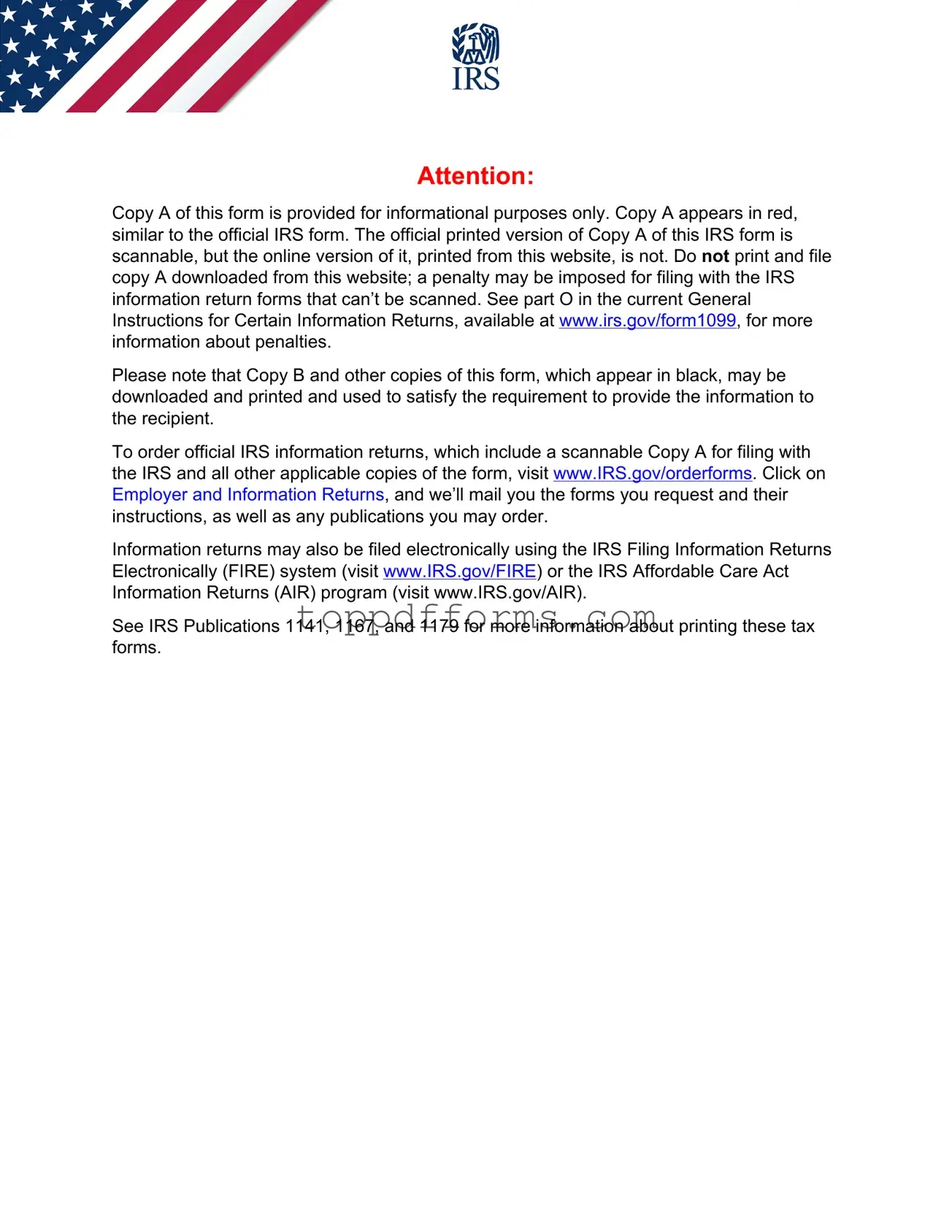What is the purpose of the 1099-NEC form?
The 1099-NEC form is used to report nonemployee compensation. If you are an independent contractor, freelancer, or someone who provides services but is not classified as an employee, you may receive this form. It informs both you and the IRS about the income you earned from that work. If you received $600 or more in a calendar year, the payer is required to issue this form to you. This ensures that you report this income accurately on your tax return.
How do I obtain a 1099-NEC form?
You can download and print copies of the 1099-NEC form from the IRS website, but be cautious. Copy A, which is the version filed with the IRS, must be the official scannable version. If you print it from the website, it will not be scannable and could result in penalties. Instead, you should order the official forms through the IRS's order forms page. This way, you'll receive the correct scannable Copy A along with other necessary copies for your records.
What should I do if I believe I am misclassified and should have received a W-2 instead?
If you believe you are an employee rather than an independent contractor, and your payer has issued a 1099-NEC instead of a W-2, it’s important to address this. You should first communicate with your payer to correct the classification. If they refuse or do not respond, you can report the income shown on the 1099-NEC on your tax return as wages. Additionally, you may need to complete Form 8919, which helps determine your correct employment status and ensures you pay the appropriate taxes.
What happens if I don’t report the income from my 1099-NEC?
Failing to report the income listed on your 1099-NEC can lead to serious consequences. The IRS receives a copy of this form, so they will be aware of the income you earned. If you do not report it, you could face penalties for negligence or underreporting your income. It’s crucial to include this information when filing your tax return to avoid potential fines and interest on unpaid taxes. If you have questions about how to report this income correctly, consulting a tax professional can be beneficial.
